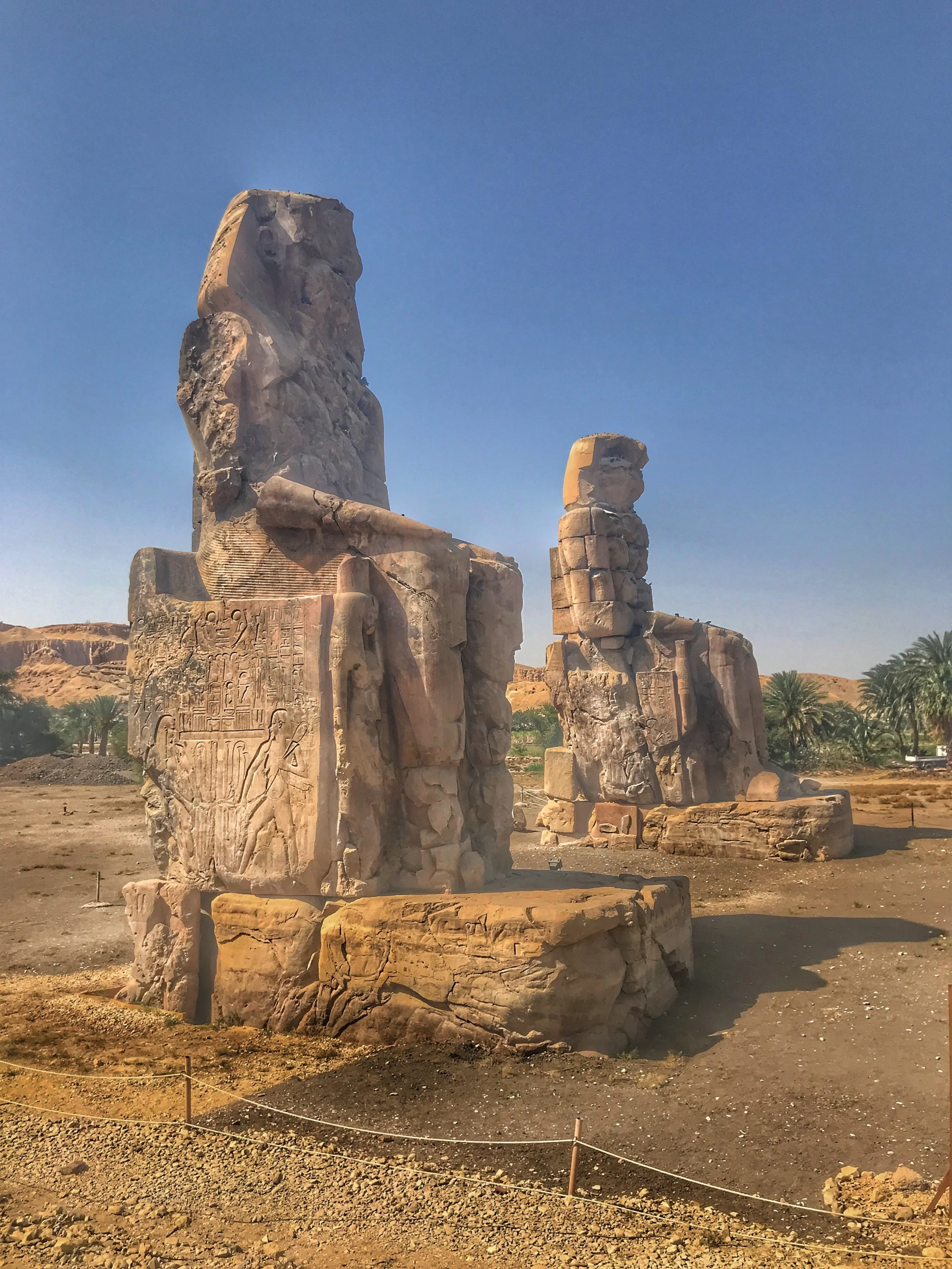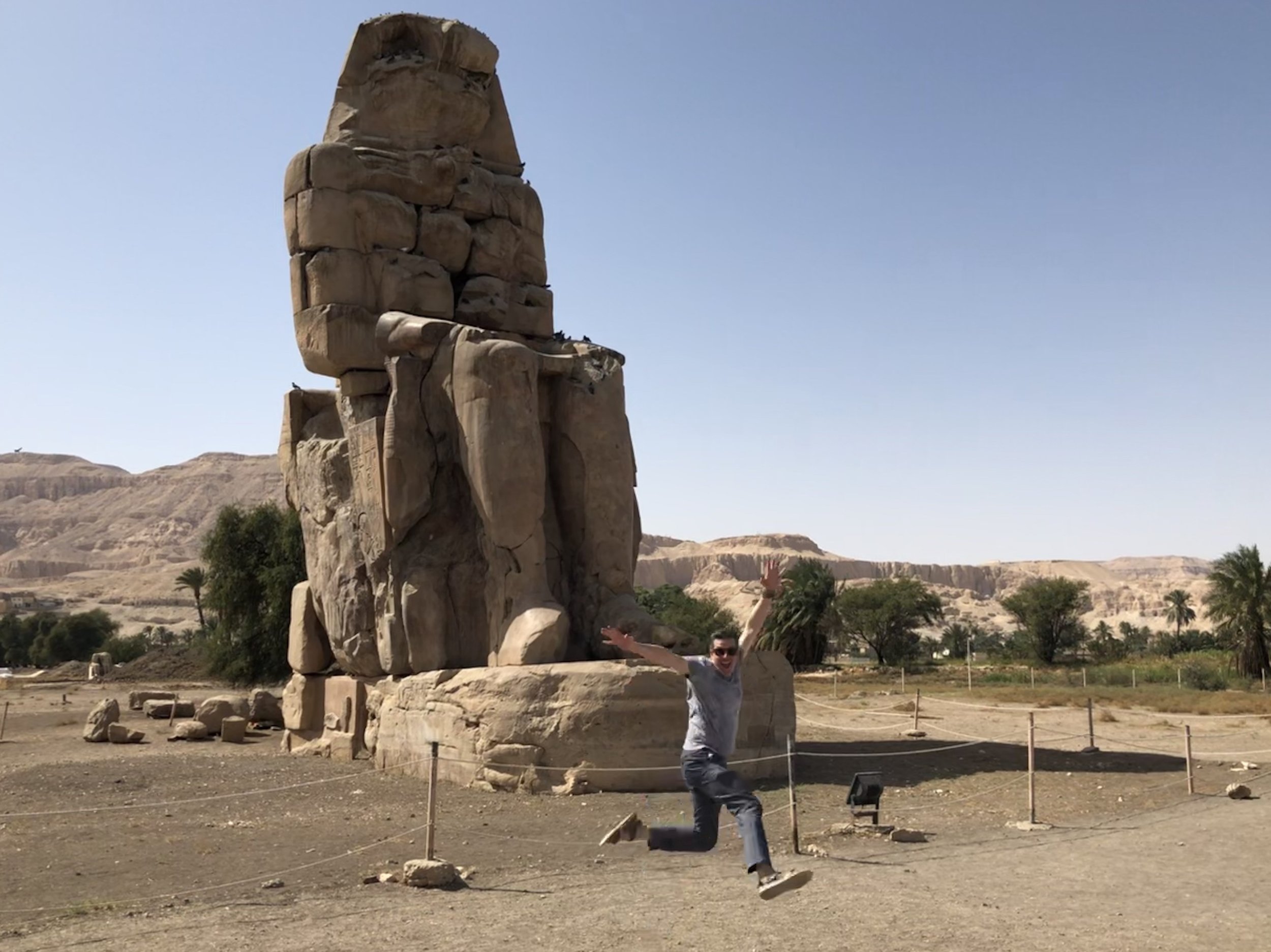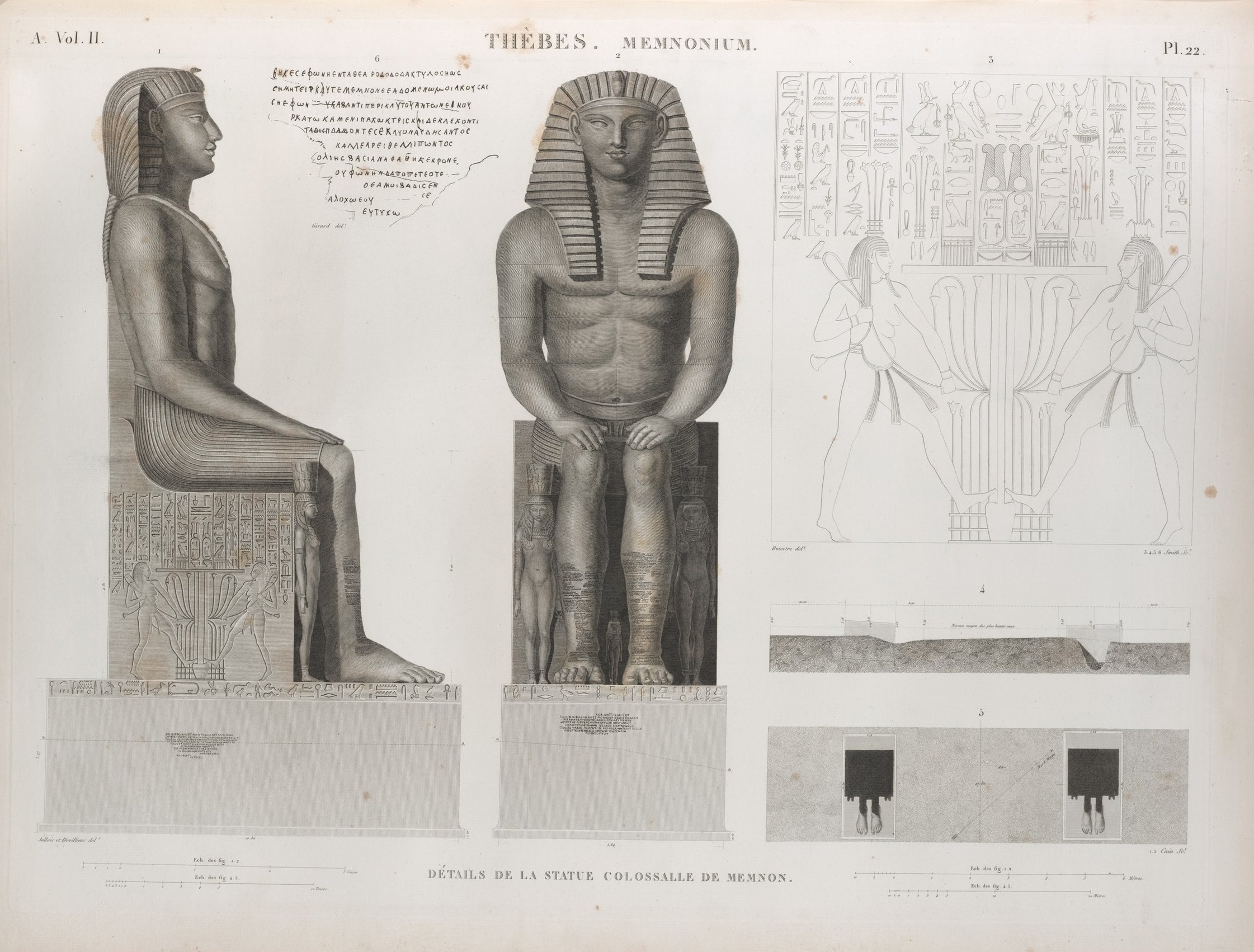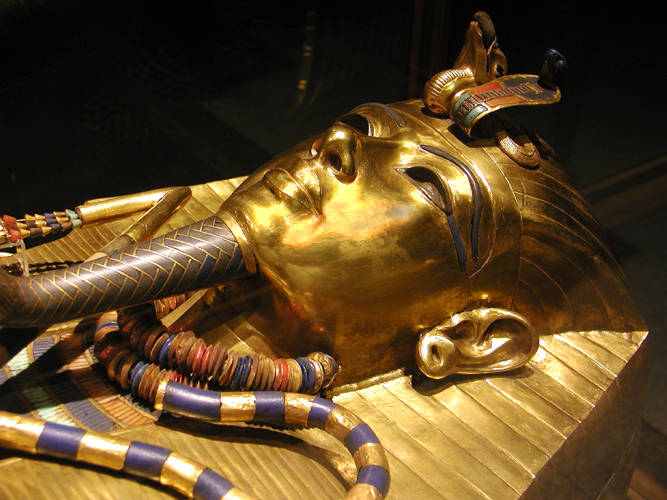The crumbling giants in Luxor are all that’s left of Amenhotep III’s mortuary temple.
These decaying statues were once guardians of one of the most impressive temples in Egypt
There’s not much left to see, but that doesn’t stop most visitors to Luxor from making a quick pit stop at the Colossi of Memnon.
Ravaged by earthquakes, looters and time itself, the crumbling statues you see today are nothing compared to their past glory. When they were first built, they were painted with bright white, red, brown, blue and even some golden gilding to set off key areas.
“At dawn, people would visit the statue to ask a question of it, trying to decipher an answer in its prophetic whispering. ”
Statues of Memnon at Thebes, During the Inundation by David Roberts, 1846-1849
Amenhotep III’s Mortuary Temple
Amenhotep III (who ruled during the 18th Dynasty, from 1386-1353 BCE) sits on his throne, while smaller statues of his chief wife, Tiye, and his mother stand between his legs. Carved from single pieces of sandstone, the statues rise 60 feet into the air and weigh 720 tons. Situated on the West Bank of the Nile, they guarded the entrance to Amenhotep’s mortuary temple.
The giants weren’t alone, though. Just beyond was another pair of colossi, and then another pair through the next pylon. Each pair got smaller than its predecessors, as you moved into the depths of the temple.
One of the statues was thought to sing and prophesize back in Roman times
This colossi were not only there to instill awe in viewers — they were also representations of fertility and the life-giving abundance of the River Nile. During the annual flood, the water would rush past the giants, flowing along the avenue of sphinxes and into the temple itself. Only the innermost sanctuary was protected, having been built on a slight elevation.
After months of being partially submerged, the colossi would re-emerge as symbols of rebirth.
Wally does one of his jumping pics in front of the 60-foot statue
While Hatshepsut’s mortuary temple is in much better shape today, Amenhotep’s was originally much larger and more impressive. It was even said to rival the massive Karnak complex.
Archaeological evidence shows that there were once hundreds of stone statues within the temple. These depicted not only the pharaoh but various gods that would protect him in the afterlife: Osiris, the lord of the underworld, Sekhmet, the lion-headed goddess with healing powers, and sphinxes bearing the jackal head of Anubis, who oversaw the mummification process. (Learn how — and why — Ancient Egyptians created mummies.)
The temple would have been filled with priests worshipping the statues and offering food, drink and some of the finer luxury items the king was used to in this life and would want to enjoy in death as well.
A nice stranger offered to take our picture
The Singing Statue
For a while, the northern giant had been damaged in such a way that when the wind blew through, it made a whistling noise that some mistook for singing. People believed that it happened every morning at dawn and they would visit the statue to ask a question of it, trying to decipher an answer in its supposedly prophetic whispering. (Popular thought now is that it was dew drying in the cracks of the porous stone.)
The Roman Emperor Septimus Severus visited the site but didn’t hear the singing. In a misguided attempt to curry favor with the oracle, he repaired the colossus in 196 or 199 CE. It’s a total bummer, but after the renovation, the colossus never again sang its quiet soothsaying song.
The Vocal Memnon by Harry Fenn, 1881-1884
A Case of Mistaken Identity
If these colossi depict Pharaoh Amenhotep III, why are they now called Memnon? During the Trojan War, Ethiopia’s King Memnon joined the side of Troy to battle the Greeks. He was killed by the famous demigod hero Achilles but was admired for his courage and fighting prowess. When Greek tourists visited this site, they mistook Amenhotep for Memnon — in part because they thought the singing might be that of Memnon’s mother, Eos, the goddess of the dawn, lamenting the loss of her son. The name stuck.
An illustration from Description de l'Égypte, 1809-1828
Sadly, all that remains of this once-stunning temple are the crumbling, now-silent colossi that stood guard out front. –Wally





































